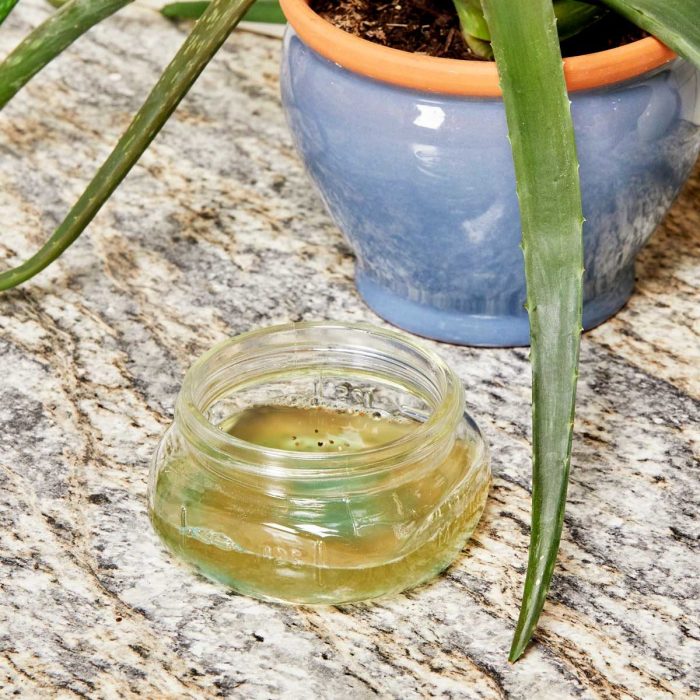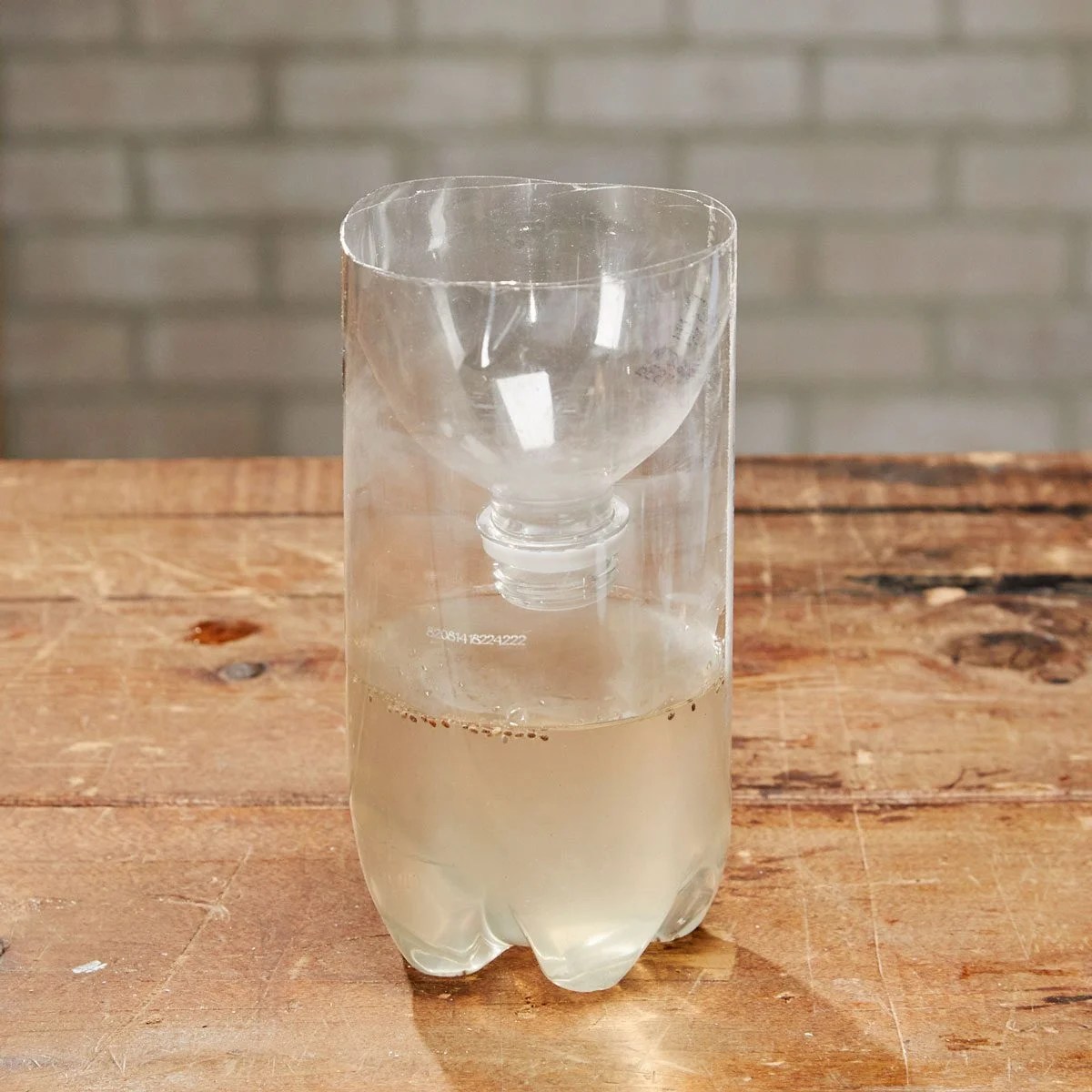DIY Knat Trap: A Guide to Effective Pest Control. Knats, those tiny, annoying flies, can quickly become a nuisance in your home or garden. While commercially available traps exist, many find crafting their own to be a cost-effective and satisfying solution. This guide explores the world of DIY knat traps, offering insights into their effectiveness, construction, and use.
From understanding the basics of knat behavior and identifying suitable materials to designing effective traps and implementing preventative measures, this guide provides a comprehensive approach to tackling knat infestations. Learn how to attract knats to your trap, optimize its placement, and maintain it for optimal results. Discover advanced techniques and troubleshooting tips for a successful DIY knat trap experience.
Understanding the Need for DIY Knat Traps

Knat infestations can be a real nuisance, affecting not only your home’s aesthetic appeal but also potentially posing health risks. These tiny flies are attracted to moisture, decaying organic matter, and even your food, making them a persistent problem in kitchens, bathrooms, and other areas of your home.
The Problems Associated with Knat Infestations
Knat infestations can lead to a range of problems, affecting both your home environment and your health.
- Aesthetically Unpleasant: Knats are unsightly, swarming around your home and landing on surfaces, making your home look unhygienic.
- Food Contamination: Knats can contaminate your food, laying eggs on fruits, vegetables, and other food items, potentially leading to food spoilage and health risks.
- Health Risks: While not typically known to spread diseases, knats can trigger allergies and cause irritation, especially in individuals with sensitive skin.
- Psychological Impact: The constant presence of knats can be stressful and frustrating, impacting your overall well-being.
Benefits of Using DIY Knat Traps Over Commercially Available Ones
While commercial knat traps are readily available, opting for DIY solutions can offer several advantages.
- Cost-Effective: DIY knat traps often utilize readily available and inexpensive materials, making them a budget-friendly alternative to store-bought traps.
- Customizable: DIY traps allow you to tailor the design and materials to your specific needs and preferences, ensuring effectiveness and aesthetics.
- Environmentally Friendly: Some DIY knat trap recipes utilize natural ingredients and methods, minimizing the use of harmful chemicals and promoting a more sustainable approach.
Effectiveness of Different DIY Knat Trap Designs
Various DIY knat trap designs have been tested and proven effective, each utilizing different principles to attract and capture these pesky flies.
- Fruit Fly Trap: This classic design uses a mixture of fruit, vinegar, and dish soap to attract and trap flies. The fruit provides a tempting scent, while the vinegar and dish soap create a sticky surface that traps the flies.
- Wine Bottle Trap: A simple and effective method involves filling a wine bottle with a mixture of fruit juice, water, and dish soap. The narrow opening of the bottle makes it difficult for flies to escape once they enter.
- Yellow Sticky Trap: Yellow sticky traps are highly effective in capturing flies. The bright yellow color attracts flies, and the sticky surface traps them.
Attracting Knats to Your Trap

To effectively catch knats, you need to understand what attracts them to specific locations. This knowledge is crucial for designing a trap that will lure them in. By understanding the factors that influence their behavior, you can create a trap that effectively targets their weaknesses.
Understanding Knat Attraction, Diy knat trap
Knats are attracted to various factors, including:
- Food Sources: Knats are drawn to decaying organic matter, such as rotting fruit, vegetables, and compost. They are also attracted to sugary substances, like fruit juices and syrups.
- Moisture: Knats thrive in moist environments. They are often found near drains, sinks, and other areas where water collects.
- Light: While not as strong an attraction as other factors, knats can be drawn to light, especially at night.
- Temperature: Knats prefer warm temperatures, so they are more active in the summer months.
Effective Attractants for Knat Traps
Knowing what attracts knats, you can use various attractants to lure them into your trap. Here are some of the most common and effective options:
- Fruit: Overripe or decaying fruit, such as bananas, apples, or peaches, is a potent attractant for fruit flies, a common type of knat. The fermentation process produces an odor that is irresistible to these insects.
- Vinegar: Apple cider vinegar is a popular choice for attracting fungus gnats, another common knat species. The acidic scent is particularly effective in attracting these insects.
- Sugar: A simple sugar solution, such as water mixed with sugar or honey, can be effective in attracting various knat species. The sweetness of the solution draws them in.
- Yeast: Yeast, a common ingredient in bread making, can also be used as an attractant. It produces a strong, yeasty odor that attracts knats.
- Beer: Similar to vinegar, beer can be effective in attracting gnats. The combination of sugar and yeast in beer creates a potent attractant.
Comparing Attractant Effectiveness
The effectiveness of different attractants can vary depending on the knat species you are targeting. Here’s a table comparing the effectiveness of different attractants for common knat species:
| Attractant | Fruit Flies | Fungus Gnats | Drain Flies |
|---|---|---|---|
| Overripe Fruit | Highly Effective | Moderate | Low |
| Vinegar | Moderate | Highly Effective | Moderate |
| Sugar Solution | Effective | Moderate | Moderate |
| Yeast | Moderate | Moderate | Low |
| Beer | Effective | Moderate | Moderate |
Advanced DIY Knat Trap Techniques
Taking your DIY knat trap game to the next level involves incorporating advanced techniques that can significantly boost their effectiveness. This section delves into strategies that leverage specific ingredients, modifications, and combinations to create more powerful knat traps.
Optimizing Trap Placement
Strategic placement is crucial for maximizing knat trap effectiveness. Knats are attracted to specific conditions, such as warmth, moisture, and food sources. Placing traps in areas where these conditions are prevalent can significantly increase their catch rate.
- Near Fruit Bowls or Garbage Cans: Knats are drawn to fermenting fruit and decaying food, so placing traps near these areas will increase their chances of encountering the trap.
- In Warm, Humid Environments: Knats thrive in warm, humid environments, so positioning traps in kitchens, bathrooms, or basements can be particularly effective.
- Near Windows and Doors: Knats often enter homes through windows and doors, so placing traps near these entry points can help intercept them before they spread.
Using Specific Ingredients
Certain ingredients are particularly effective at attracting knats. These ingredients release scents and aromas that are irresistible to these pesky insects.
- Yeast: Yeast is a powerful attractant for knats, as it releases a strong fermented odor that they find irresistible.
- Vinegar: Vinegar, particularly apple cider vinegar, is known for its ability to trap and kill knats. Its acidic nature disrupts their digestive systems, leading to their demise.
- Overripe Fruit: The fermentation process of overripe fruit releases strong scents that attract knats. Use fruit like bananas, apples, or melons to create a potent lure.
Enhancing Trap Performance
Adding certain elements to your trap design can significantly boost its performance and make it more effective at catching knats.
- Adding a Funnel: A funnel placed above the trap’s opening can direct knats into the trap more efficiently, increasing the catch rate.
- Using a Blue or Yellow Container: Knats are attracted to blue and yellow colors. Using a blue or yellow container can make the trap more visible to knats, increasing their chances of finding it.
- Adding a Light Source: Knats are attracted to light, so adding a small light source near the trap can further increase its effectiveness.
Combining Trap Designs
A comprehensive approach to knat control often involves combining different trap designs to address various aspects of their lifecycle.
- Combining Attractant Traps with Sticky Traps: This strategy utilizes attractant traps to lure knats towards the sticky traps, which effectively capture them.
- Combining Homemade Traps with Commercial Traps: This approach combines the cost-effectiveness of DIY traps with the advanced features of commercial traps, such as pheromone lures or UV light.
DIY knat traps offer a practical and resourceful solution for controlling these pesky insects. By understanding knat behavior, utilizing readily available materials, and employing effective trapping techniques, you can effectively reduce knat populations in your home and garden. Remember, consistent maintenance and a proactive approach to prevention are key to long-term success. With this guide, you can confidently embark on your DIY knat trap journey, creating a more pest-free environment for yourself and your loved ones.
A DIY knat trap can be a simple and effective way to reduce pesky insects in your home. While you’re working on your trap, remember that some common ingredients, like garlic, can interact with medications like blood thinners , so always consult your doctor before using any new remedies. Once your knat trap is set, you can enjoy a more peaceful and bug-free environment.
